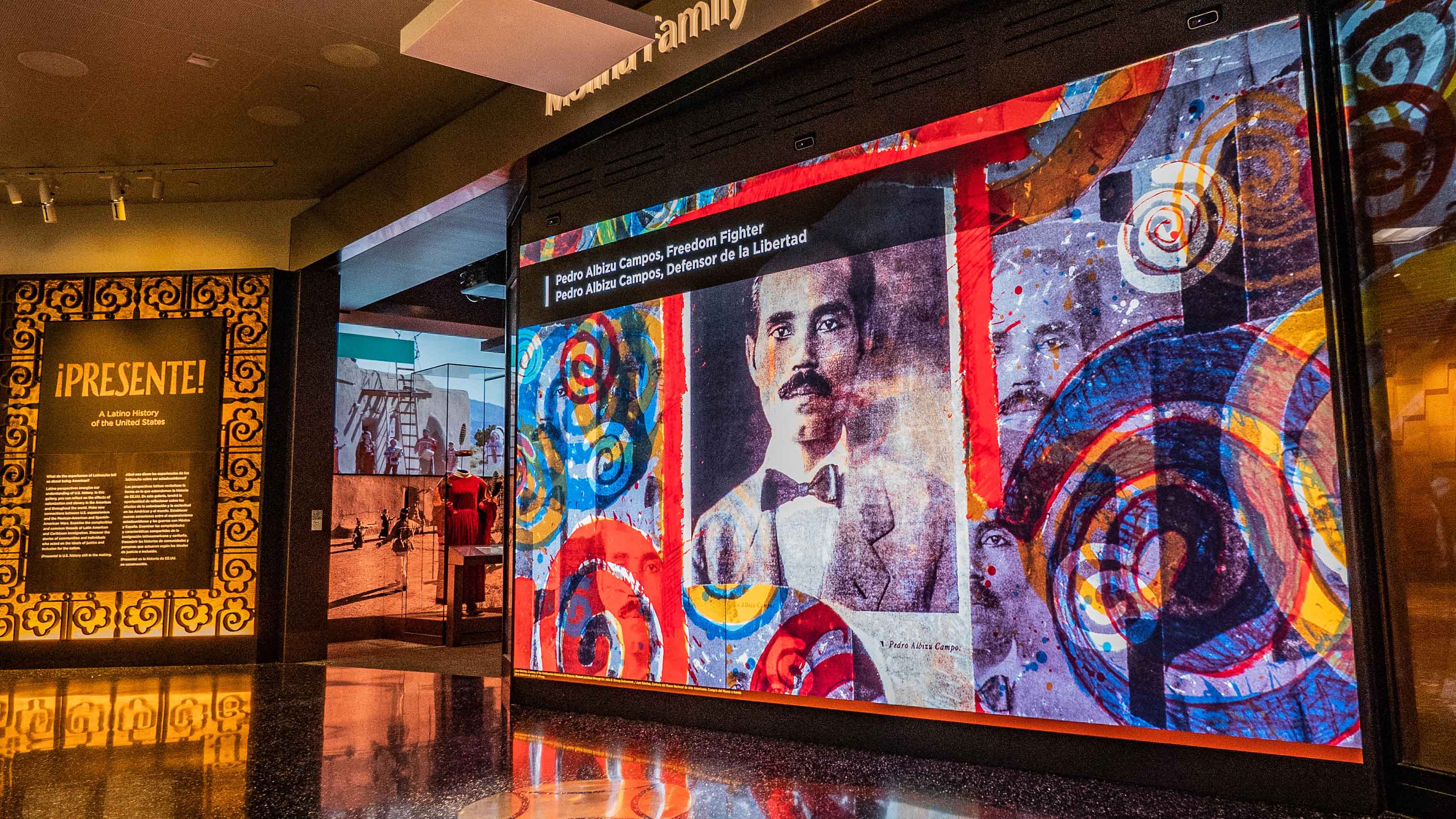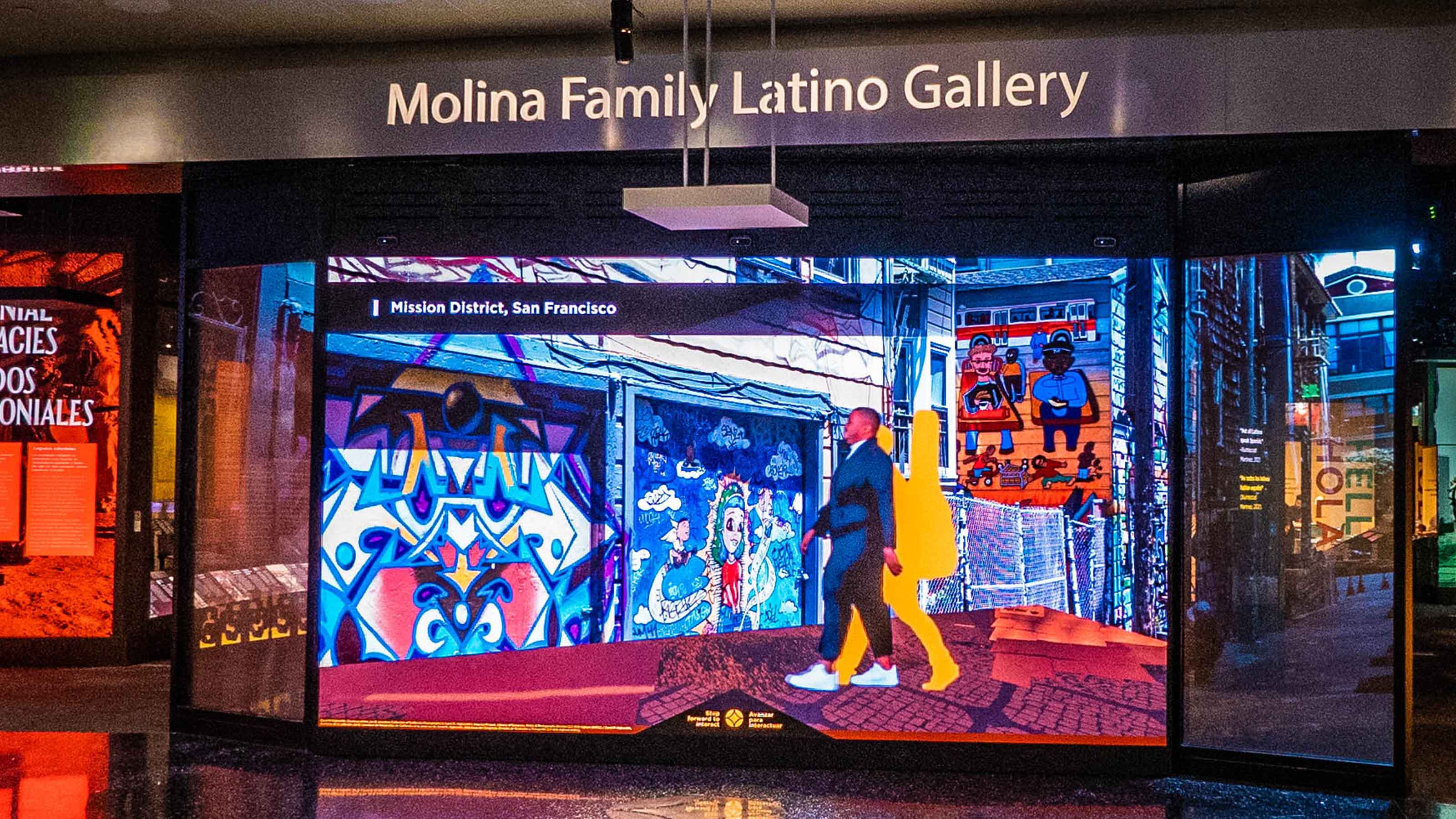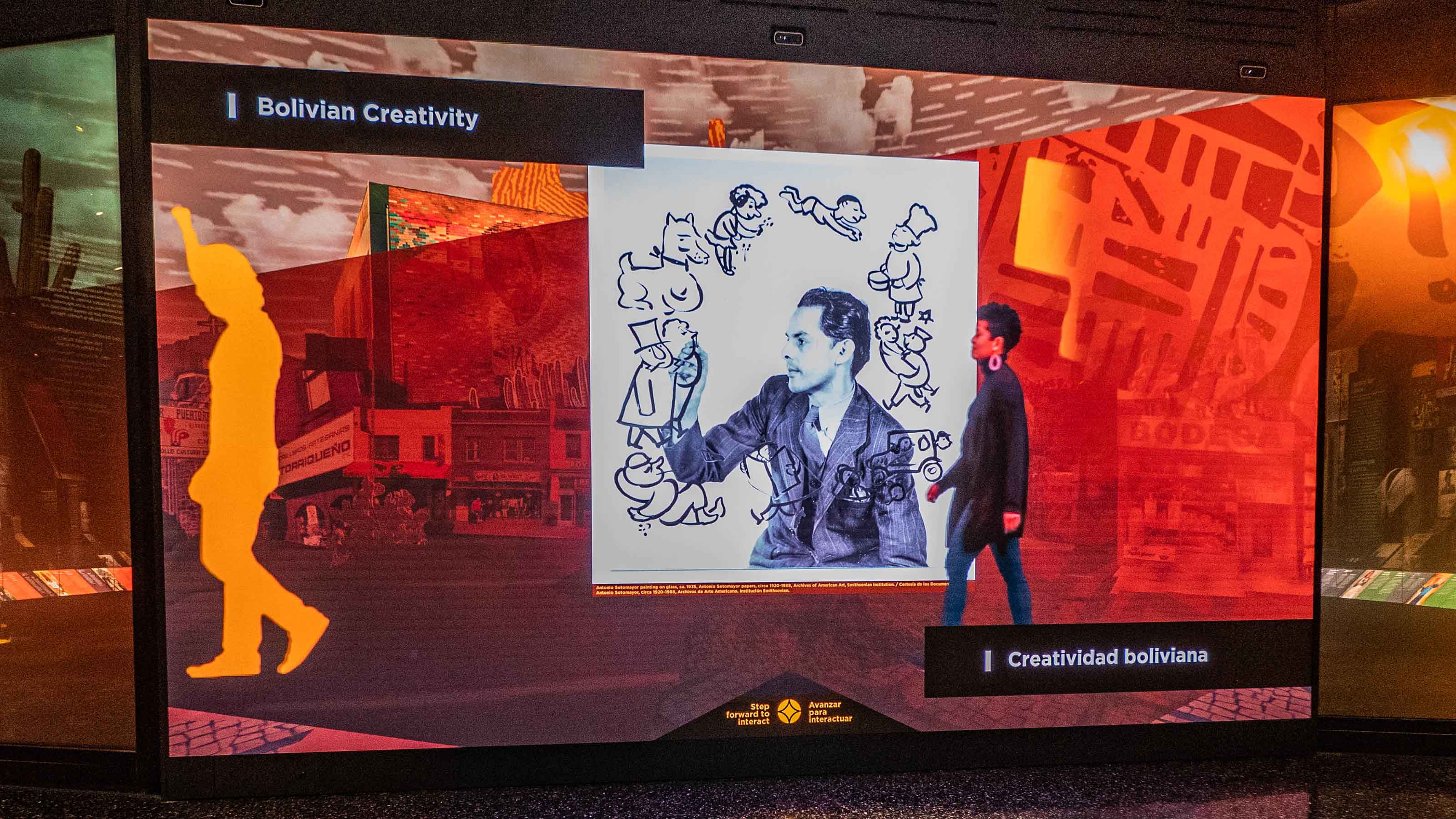'Meet Us' in DC
The new Latino Gallery at Smithsonian National Museum invites visitors to explore with its interactive video wall.

Everyone likes a good teaser—this one will provide over a decade’s worth of enriching programming and exhibitions leading to the anticipated opening of the Smithsonian’s National Museum of the American Latino.
Legislation passed in 2020 officially established the museum, but plans for its building are still forthcoming. Through the support of individuals, foundations, and corporations, including a $10 million lead gift from the family of C. David and Mary Molina, the Molina Family Latino Gallery at The Smithsonian’s National Museum of American History in Washington, DC, had its official unveiling last June, providing the museum a temporary home while serving as the first iteration of the National Museum of the American Latino.
[The Integration Guide to Video Walls]
The interactive opening exhibit, “¡Presente! A Latino History of the United States,” illuminates U.S. Latinos’ historical and cultural legacies. It showcases stories of individuals who have helped to shape the United States, including Mexican American union leader César Chávez, Puerto Rican baseball player Roberto Clemente, and Cuban American singer Celia Cruz. Objects and content showcased within the exhibition are accessible in both English and Spanish, and a companion website was developed to highlight select oral histories, 3D objects, and historical biographies.
High-Tech Representation
When visitors enter the new 4,500-square foot gallery space, they are greeted by a nearly 14x8-foot Planar TVF Series LED video wall. Known as "Meet Us," the display was designed to deliver engaging content and dynamic images that reflect the diversity of the Latino experience in the United States.
[NAB: Broadcast Quality for the Next Generation]
Some of the imagery featured includes an imagined background plaza of Latino scenes highlighted by urban and rural landscapes. The concept was to deliver engaging content to attract visitors, especially Latinos.
A daily selection of the top stories for AV integrators, resellers and consultants. Sign up below.

“Research has shown that Latinos don’t visit museums as much compared to other demographics, and one of the reasons why is because they don’t feel included or see themselves represented,” explained David Coronado, senior communications officer for the National Museum of the American Latino. “So, that was something we really took into consideration when we developed this installation. It had to be attractive to Latinos and immediately recognizable as something speaking to them.”
[Why dvLED Is Gaining Market Share]
At the same time, Coronado added, the display also had to pique the curiosity of the non-Latino population visiting the National Mall. As part of the strong focus on accessible design, ensuring it is inclusive to visitors with varying physical, sensory, and brain-based conditions, sensor-based technology was incorporated to help guide visitors through the exhibition and trigger interactive, immersive experiences.
“When visitors approach and stand on a bronze medallion in front of the video wall, sensors trigger one of six virtual greeters who welcome them,” said Adam Schmidt, executive vice president for Planar. "The motion graphics encourage people to follow the chronological layout of the exhibit, moving from right to left.”
With its high-level performance and the ability to display dynamic content, the 1.2mm pixel pitch Planar video wall delivers the ideal first impression of the temporary home for the National Museum of the American Latino. It also offers the flexibility to be configured for various other uses by museum staff, including the ability to control the video wall for unique presentations, which Coronado experienced during a recent press preview.
“We wanted to stop the video during speaking remarks and display a splash screen, and were able to seamlessly switch from the default video loop to a static image," he recalled. "It was a ‘wow’ moment—and it looked amazing.”
Video Wall or Projector?
BBI Engineering, an integrator known for its unique AV system installs for museums and theaters, was selected for the "Meet Us" install. BBI considered how visitors would engage with the video wall when deciding whether a projector or LED video wall was the best option for the space. Because visitors would be walking up and interacting with the exhibit, LED provided the best opportunity for clear visuals without the risk of shadows, which would be an issue if projectors were chosen.
A great deal of natural light highlights the space, so selecting a display with the appropriate pixel pitch would deliver crisp imagery no matter the brightness level within the room. “0.9mm can be expensive and difficult to install,” said Sasha Harris-Cronin, principal with BBI Engineering. “Since people could interact and walk directly up to the wall, 1.5mm felt slightly on the coarse side. 1.2mm provided us a good balance between cost and resolution.”

The video wall was completed during a two-day installation process. With Planar's single-step process, which allows embedded power and signal connectors to be configured from cabinet to cabinet, the complexity of the installation was significantly reduced. With its cableless, stackable design and slim profile, the TVF Series LED allows for service issues and technical adjustments to be made quickly and easily.
[Why Go Wide with dvLED Displays?]
Harris-Cronin said the response from visitors regarding the video wall couldn’t be better. “People love it," Harris-Cronin added. "It’s dynamic; terrific color definition and effective in connecting with all visitors."
Once visitors make their way past the welcoming video wall, they can enjoy other interactive and engaging spaces, including the Somos Theater, where visitors can engage with video-based projects and installations. The General Motors Learning Lounge is a studio space for presentations and hands-on activities, and MUSLE—or Mapping the U.S. Latino Experience—is an interactive area that shares demographic data. These combine to provide visitors with an experience that will likely leave them planning a return trip to Washington, DC, when the new museum building opens.
Jennifer is a freelance writer and marketing consultant based in the New York City area. Within the AV industry, Jennifer loves to explore how technology can alter the world around us, creating immersive experiences unlike any other. She has years of experience working with AV integrators, manufacturers, and event production companies in developing engaging content to increase their overall awareness.

